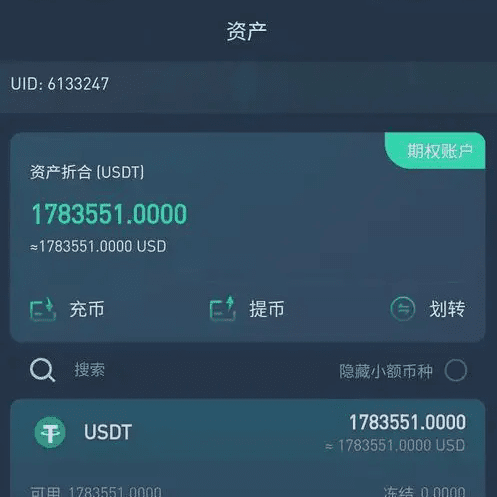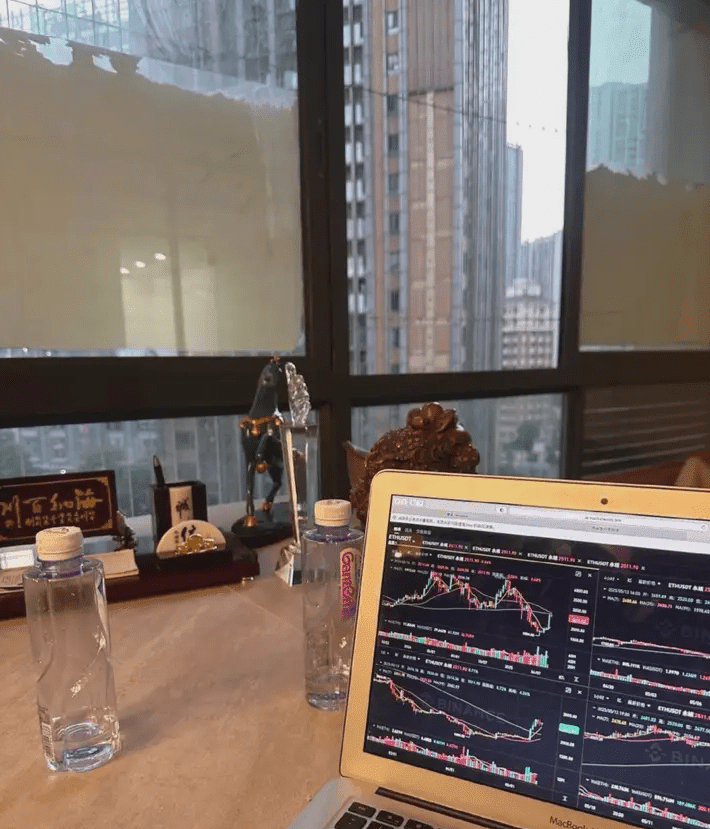These rules, even if read a thousand times, do not feel tedious at all; instead, I feel increasingly that they must be deeply remembered.
Looking back at my first three years in the crypto world, I entered the market with 200,000 in capital, only to unfortunately suffer a heavy blow, with funds shrinking to just 10,000. Friends and family all advised me to give up; they thought my trading behavior was no different from gambling, selfish, lacking responsibility, and not aspiring to improve. Those harsh words pierced my heart like needles, leaving me despondent and even starting to doubt myself.
However, the stubbornness in my heart has not extinguished. I made a vow to my family to challenge myself once again with the remaining 10,000! So, I calmed down and delved deeper into market research. To my surprise, that 10,000 allowed me to miraculously accumulate 40 million in wealth over the next three years!
I’m not exaggerating. When you truly find a trading strategy that suits you and execute it unwaveringly, then you absolutely have the ability to reverse the situation and achieve a turnaround in life!

From losing 2 million to rolling back bit by bit from 3500 USDT.
That year during the bear market, I lost a full 2 million. I couldn't sleep every day, cleared my social media, family didn’t understand, and friends began to distance themselves. During that time, I really wanted to jump from the rooftop.
Until I saw a phrase: 'No matter how much you lose, it's just the beginning; holding on is the end.' That moment awakened me. I took out my remaining 3500 USDT and treated it as my last chance. But this time, I wasn’t gambling; I was seriously reviewing, summarizing, and learning.
I finally realized that the reason I lost money before was not because of bad luck, but because I wasn’t really trading. I didn’t set stop losses, over-invested, blindly followed trends, frequently switched coins, and had no position control. Simply put, this wasn’t trading; it was gambling.
This time, I will focus only on rolling over and strictly executing.
I divided 3500 USDT into two parts, one for defense and one for offense. I only trade in markets I understand, with a single-target profit of 5%-10%, never greedy; immediately cut losses, never procrastinate; if there’s no signal, stay in cash and rest.
In the first week, I rolled from 3500 USDT to 5200 USDT.
In the second week, I broke through 10,000 USDT.
In the sixth week, my account finally showed '5WU'.
A week later, I lay on my bed, clearing my mind, and at that moment I knew I could really turn my situation around!
No miraculous operations, no insider news; I use the 'dumbest' method—don’t chase, don’t gamble, don’t act rashly, maintain the rhythm, and trade in markets I understand.
Many people lose money for one simple reason: chaos. The rhythm is chaotic, emotions are chaotic, and trading plans are even more chaotic. But as long as you stabilize your rhythm, even with small funds, you can survive and even turn the situation around.
As for how I specifically roll over? How do I select points? Which markets should I trade? Which must be cash? Here I can only talk about 30%; the remaining 70% relies on personal gradual understanding.
I have helped too many people climb up from the lows, and I have also seen too many regret not having acted sooner after being liquidated. Opportunities are always reserved for those who are prepared, but they will never wait for hesitating people. The current market is a good time for testing and rolling over—whether you want to turn the situation around depends on whether you dare to act!

From being liquidated three times and sleeping in a bridge hole to now earning steadily every month, it’s not luck; it’s based on these five iron rules earned through blood and tears.
First: Never go all in; position size is a lifeline. In 2018, I went all in on Ethereum, caught in a bear market crash, and was liquidated, almost unable to pay rent. Now I've realized: the position for a single coin must never exceed 20%, and always keep 50% cash in total. When the market skyrockets, others may profit more, but when it crashes, I can survive. Remember, surviving gives you the opportunity to make big money; the outcome of going all in can only be one of two: liquidation or regret for not selling earlier.
Second: Stop losses are more important than take profits. In 2021, when Bitcoin dropped from 60,000 to 40,000, I stubbornly held onto the illusion of 'it will rebound,' only to watch my account balance shrink from 8 million to 1.2 million. Now I set hard stop-loss lines for each coin, cutting losses immediately if a single coin loses 15%. Stop-loss is not surrender; it’s leaving a way out for the funds. The market is never short of opportunities; it’s the capital that runs out.
Third: Don’t touch leverage or contracts. In 2020, I used 10x leverage on contracts, and when Bitcoin dipped sharply at midnight, I was liquidated, losing 3 million overnight. Leverage is the poison of gambling. Ten profitable trades do not offset one liquidation. For ordinary people, using leverage is like carrying a torch through a dynamite storage; even if you profit in the short term, you will eventually pay back the market. Spot trading may earn slowly, but it allows you to sleep soundly.
Fourth: Hotspots and insider information are traps. Last year, when the metaverse concept was hot, I chased and bought five new coins, only for the project to pump and then run away, leaving me with only 30,000 from an initial 500,000. 90% of the market's hotspots are scripts carefully designed by scammers; true opportunities never rely on community calls. Sticking to Bitcoin and Ethereum, which have real value, is 100 times more reliable than chasing air coins.
Fifth: Don’t trust anyone, including your own emotions. Influencers shouting trades are all paid to do so; the 'wealth myths' in communities are mostly scams. In 2019, I followed a so-called 'expert' to buy coins, only for them to cash out at a high, leaving me holding the bag. Now I only look at white papers, hash rates, and exchange data, staying calm during declines and not being greedy during rises. Emotions are the greatest enemy of trading.
Trading coins is not gambling; it’s a game of probability. Following the iron rules may not make you rich, but it can help you survive longer in this ruthless market. Remember, those who can achieve stable profits understand how to control their desires—wealth is never gained through risk but through making fewer mistakes.
A bull market is not a way to earn easily, but stepping to the right rhythm can really take off.
My practical insights (purely practical, no fluff).
[Focus on the main line and grab the leading coins, not small ones.]
The core of this round of soaring prices is the dual engines of BTC and ETH! When Bitcoin broke through $110,000, I knew institutions had really entered the market (BlackRock ETF had an inflow of $1.2 billion in one week), decisively reallocating mainstream coins. Even if Meme coins are FOMOing, I only play with 5% of the profits—remember, living long in a bull market is more important than making quick profits.
Leverage? You can play around but bring a life jacket.
I personally saw someone on HTX lose 51.56 million dollars overnight! My principle: leverage must never exceed 1/3 of the principal's tolerance, and always set stop losses (single loss ≤ total capital 2%). Two days ago, when ETH was at $3320, many people chased shorts, but I pulled from over $3220 to $3516.
[Shanzhai season ≠ blind buying; look at the ecosystem.]
The SOL chain has been crazily buying back recently (burning 30 million dollars in 9 hours). I have preemptively invested in ecological protocol tokens; the story of the trending $MOMO on Xiaohongshu rising 120 times from the bottom tells me: Take 20% of profits every week! San Ma Ge's original words: 'Not taking out profits is just paper!'
[Risk Firewall]
Behind the carnival, dark currents are surging! If Trump's policies do not meet expectations, the market may correct to $101,500, and the fear and greed index is already at 88 (extreme greed), which could lead to a double kill at any time.
This 500,000 is not the end, but it makes me more convinced: there is no holy grail in the crypto circle; only those who respect the market can laugh to the end.
The path from small funds to large funds.
From 'operational addiction' to 'strategic patience.'
The essence of trading is the monetization of cognition, not the accumulation of operations. When you learn to patiently wait and only seize key opportunities, capital growth will naturally follow.
Build a 'major event impact model' to record and validate the impact intensity of 10 fundamental turning points on asset prices over three months. This training can elevate your opportunity recognition ability to a new dimension.
3. The pattern determines the outcome. The core of making big money with small funds is not frequent trading, but a profound understanding of the market's essence. Only by enhancing cognition can one remain undefeated in trading.
Look at indicators, not feelings.
Don't trade based on feelings; that’s blind.
Before making a trade, check these indicators:
MACD: Is there a golden cross or a death cross?
RSI: Is there overbought or oversold?
Bollinger Bands: Is there a squeeze or a breakout?
At least two of the three indicators must give consistent signals before considering entering the market.
Do not get carried away by temporary profits; understand that continuous profitability is the hardest. Review seriously, see if your profits are luck or skill. Establishing a stable trading system suitable for yourself is key to continuous profitability.
Conclusion:
Frequent trading is a path destined for failure, while true successful individuals often possess a vision and understanding that surpasses ordinary people. 'True excess returns come from cognitive differences, not from trading frequency.'
I hope this article can help you escape the trap of frequent trading and find your own trading path. Remember, trading is not gambling; it’s a battle of cognition. Only by continuously improving oneself can one remain undefeated in the market.
Life requires experiencing bumps and bruises to achieve great enlightenment! As long as you don't give up, the more you try, the closer you get to success. What is great in life is not about doing something but about dedicating a lifetime to doing just one thing.
Still the same phrase, if you don't know what to do in a bull market, click on the old blogger’s avatar, follow, and engage in bull market spot planning, contract passwords, shared free of charge.